November 15
We enjoyed a successful work day making progress with our ecological restoration project! The day’s efforts were focused on the “Secret Garden,” which is the innermost courtyard at Dana, accessed within the building itself. This garden is a special place–a real hidden gem that students are particularly interested in. We look forward to nurturing its ecosystem and helping it become a flourishing, welcoming space for visitors–humans and wildlife alike!
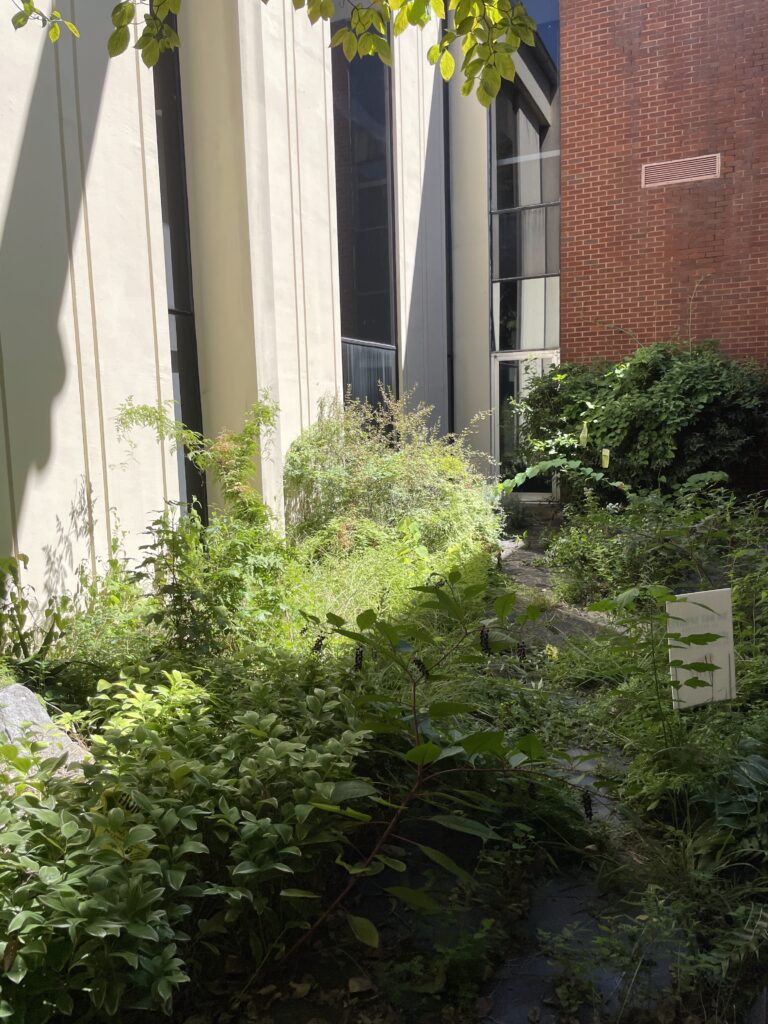
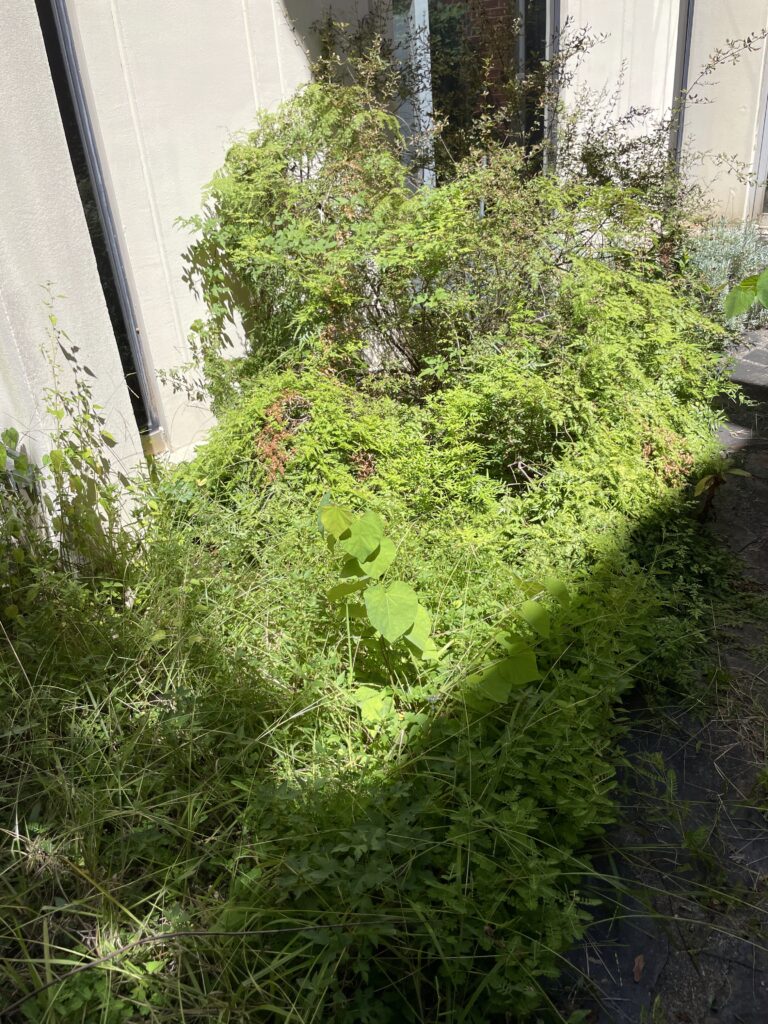
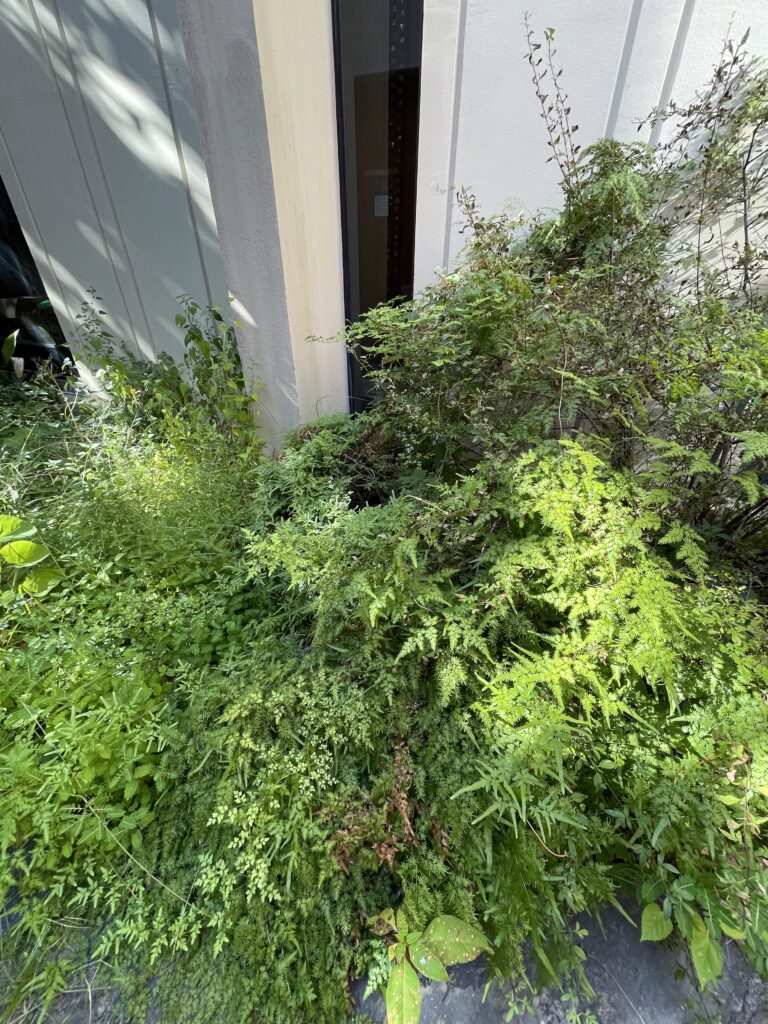

Our main focus was laying down a weed barrier over the beds and covering it with a generous layer of mulch. We made our own biodegradable weed barrier from salvaged cardboard, old paper bags, and other similar repurposed materials. We created overlapping layers, carefully nestling them around the plants we wanted to protect. Then we wetted the paper thoroughly before spreading mulch over the top. Our wood chips had been delivered for free from a local arborist (thank you, Appleseed Tree Service!). This technique, known as “sheet mulching” or “lasagna composting,” helps smother weeds and protect existing soil while adding nutrients and improving the soil over time.
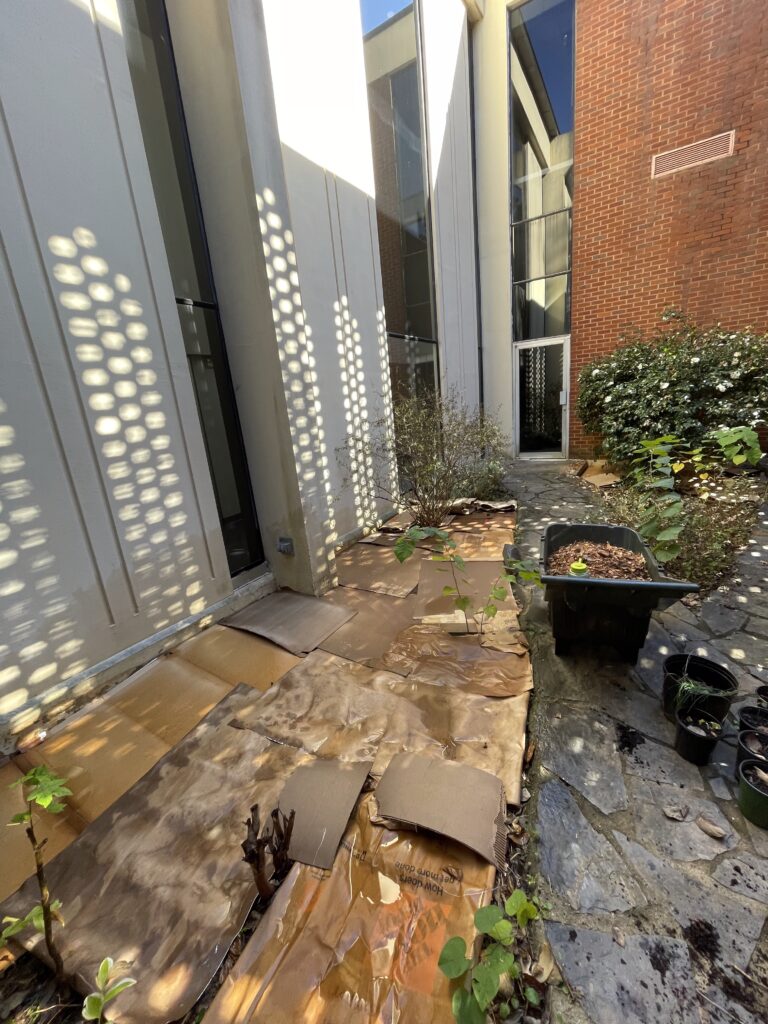
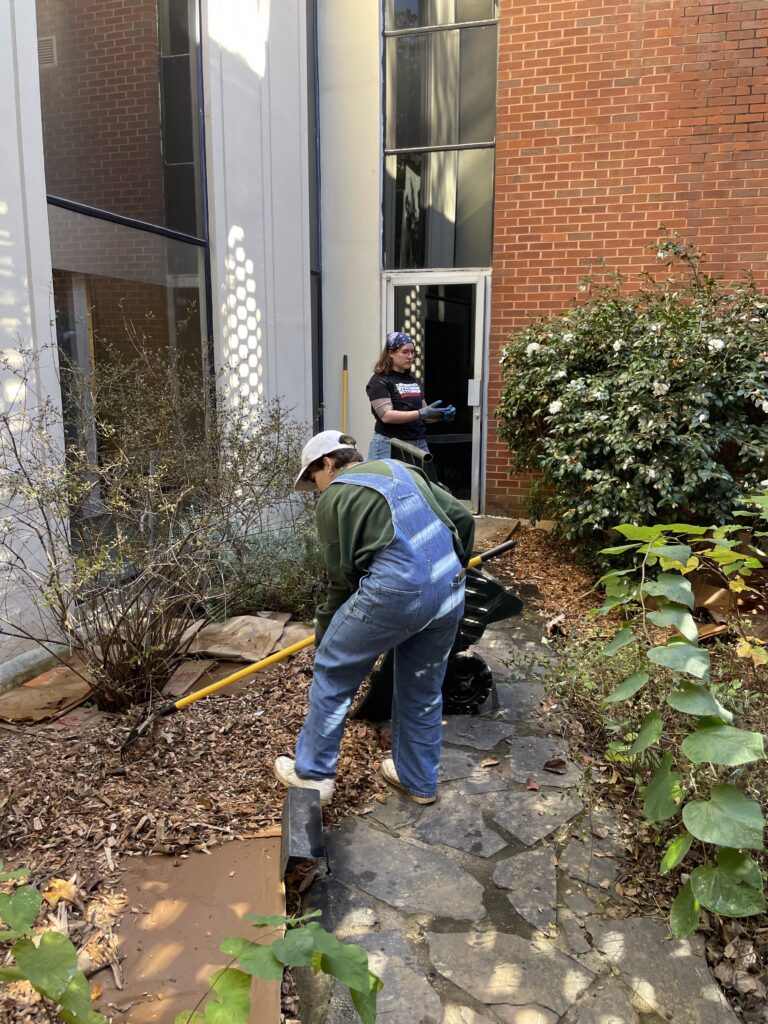
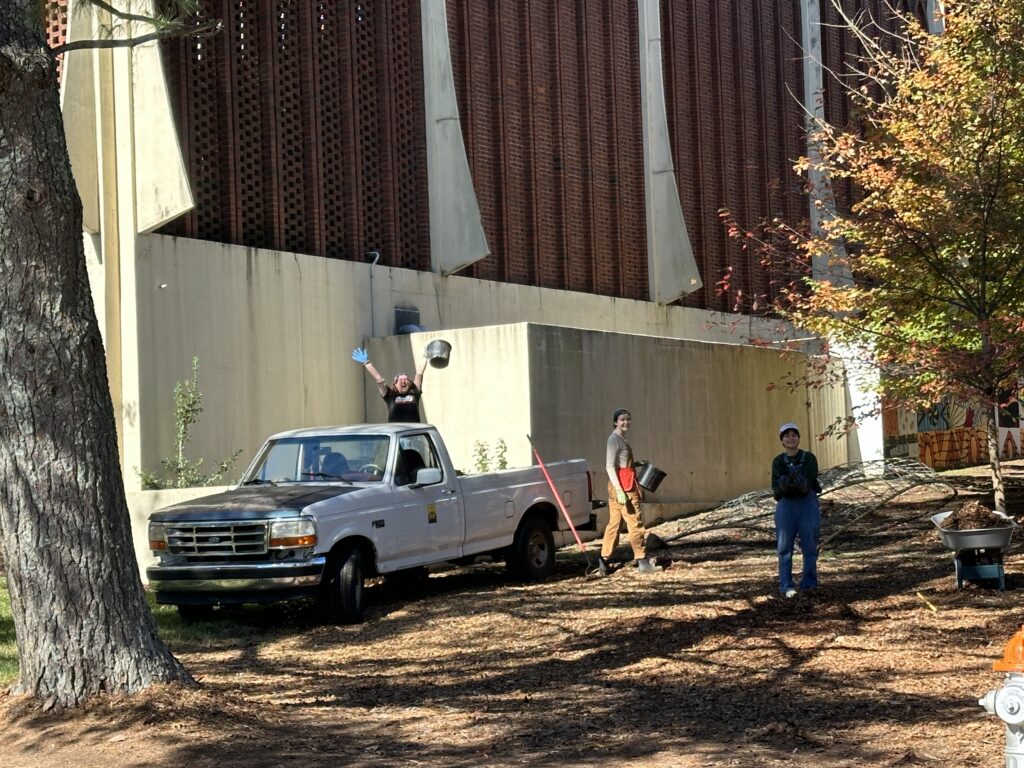
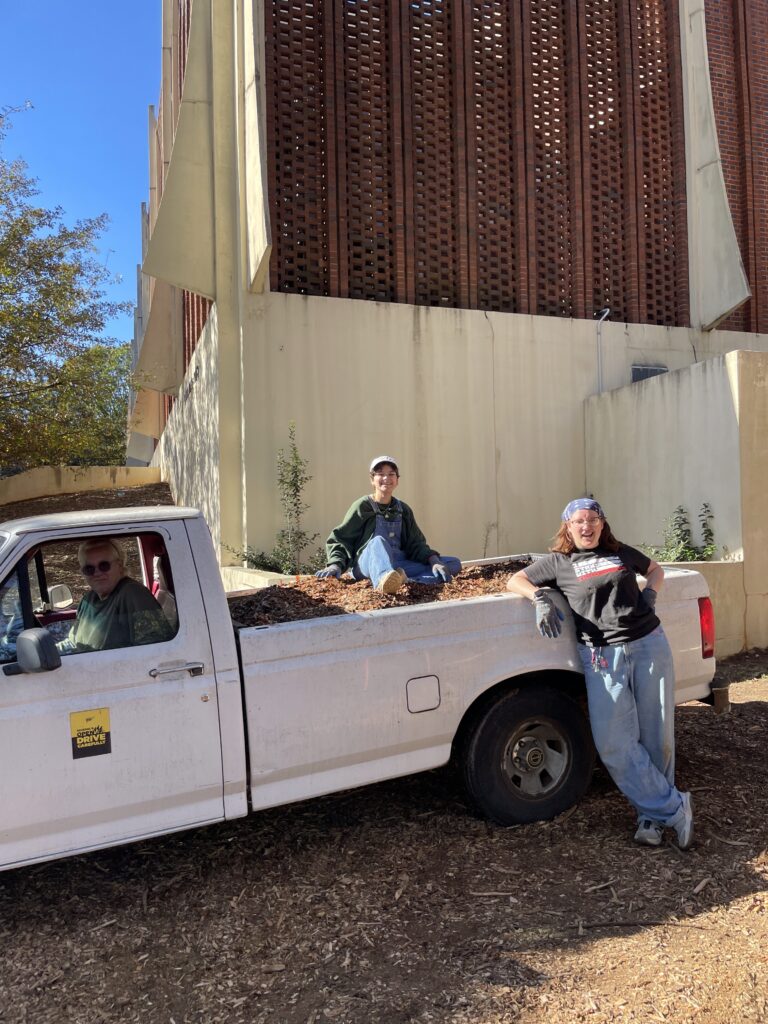
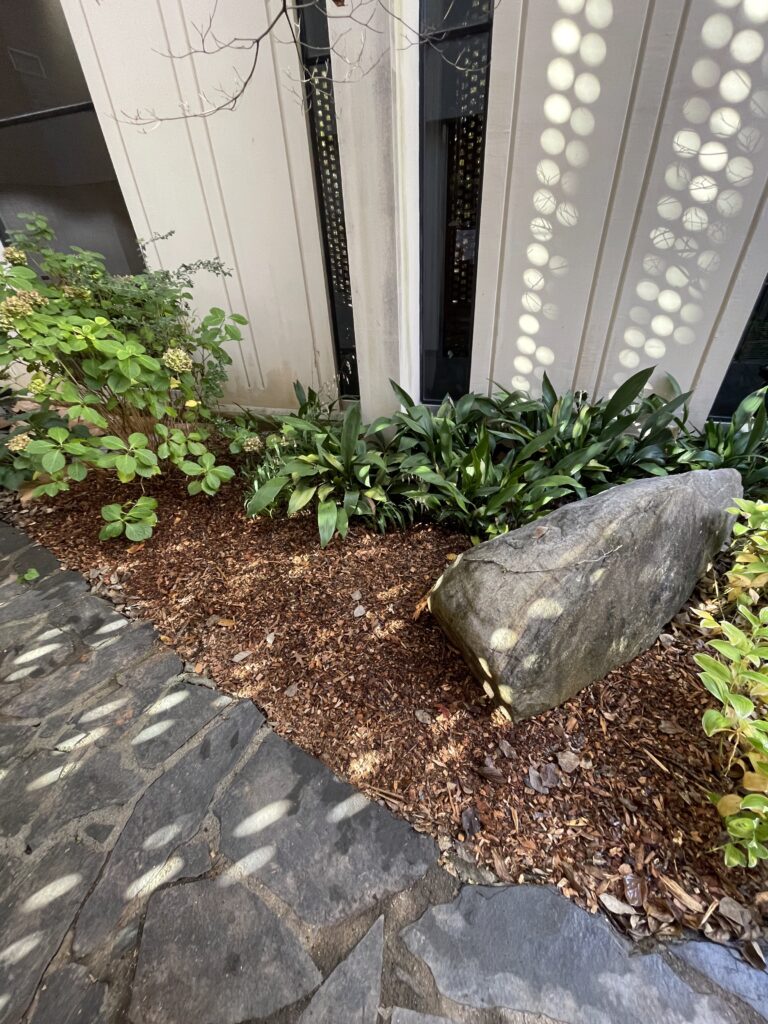
Earlier this semester, we had some work days to remove invasive plants in the courtyards. Eliza Crofts, our garden lead, taught students how to strip leaves from the ivy vines we pulled, and we saved those leaves to use as compost (the stripped vines can be used for basketry, weaving, or sculpture projects). The ivy leaves can create a layer of organic matter to rebuild soil. Eliza chose an area at the far end of the Secret Garden with very compacted clay soil, poor drainage, and very little plant life. To this area, we also added all of the fallen leaves from the dogwood tree in the Secret Garden, along with leaf litter swept from the Lower Courtyard, dead (non-seeding) weeds, and plant trimmings saved from garden maintenance throughout the season. We ended up with a layer of decomposing leaf mulch about 8-10” thick, which will be covered with an additional layer of wood chips.
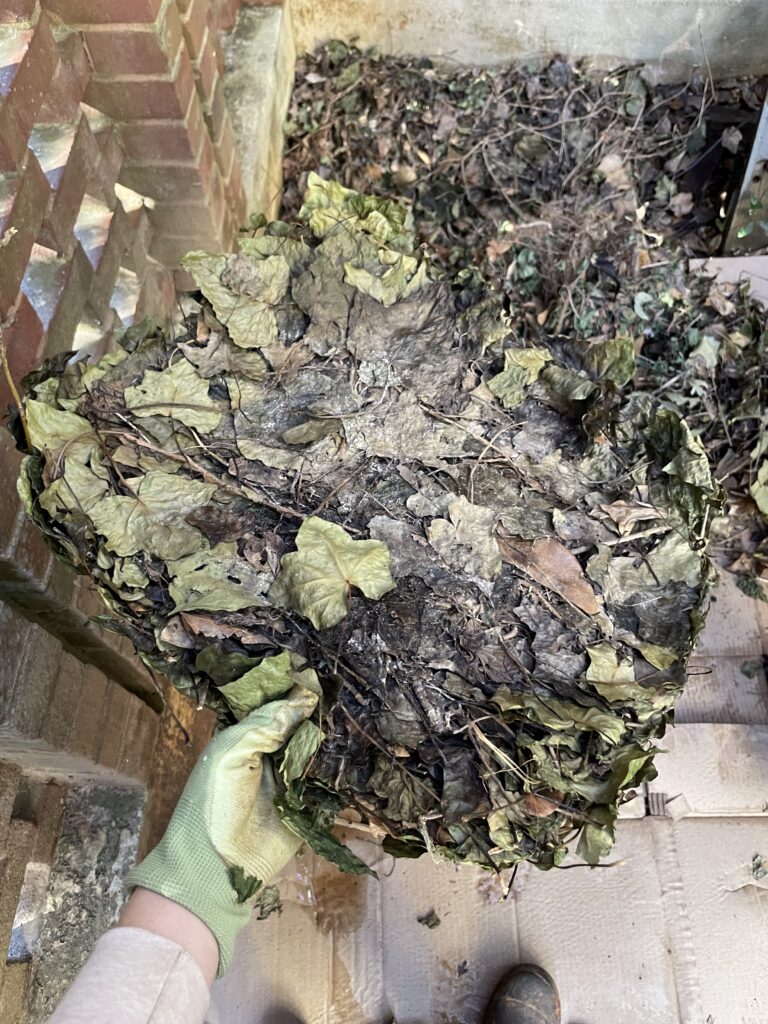
As the leaf litter breaks down, it will release nutrients to the soil as a natural fertilizer and improve the soil structure, aeration, and percolation. Leaf litter also helps protect the soil from erosion and runoff. It provides food and habitat for soil-dwelling microbes, invertebrates, and fungi that are all important parts of a healthy ecosystem. With the habitat and moisture it creates, leaf litter is essential to the life cycles of many native insects and amphibians, and it provides shelter for mammals, birds, and reptiles. Leaf mulch also helps insulate roots of perennial native plants through the winter, and helps suppress the growth of unwanted weeds. All of these reasons (along with the ecological harm caused by gas-powered leaf blowers) are why Eliza advocates for leaving the leaves and letting nature fulfill its cycle! It’s one of the easiest ways to practice regenerative landcare in most ecosystems (exceptions might include areas with native prairie grasses and other plants that naturally occur in habitats without abundant trees, because they may not be adapted to handle heavy leaf coverage). For more information on the Leave the Leaves movement, check out this page from the Xerces Society for Invertebrate Conservation.
Prior to our mulching work day, we had dug up quite a lot of moss from the ground in the Secret Garden to save it from being smothered by the weed barrier. We’ve chosen an area around the roots of the dogwood tree towards some large stones in the shadiest part of the garden as the planting location for the rescued moss, since moss has been one of the only plants to thrive in this area. Since these mosses prefer growing on compacted soils, we left this area unmulched. After clearing the surface of leaves and debris, we lightly scratched the dirt with a serrated soil knife (similar to scoring clay when joining pieces together in ceramics) to provide the moss with some traction to help it become established. Our helpers had a great time nestling the pieces of moss together, creating a patchwork carpet of green to accentuate the tree’s beautifully intricate roots. We will continue planting moss this week, along with ferns that were rescued from the lawn area in the Upper Courtyard, where they were in danger of being mowed.

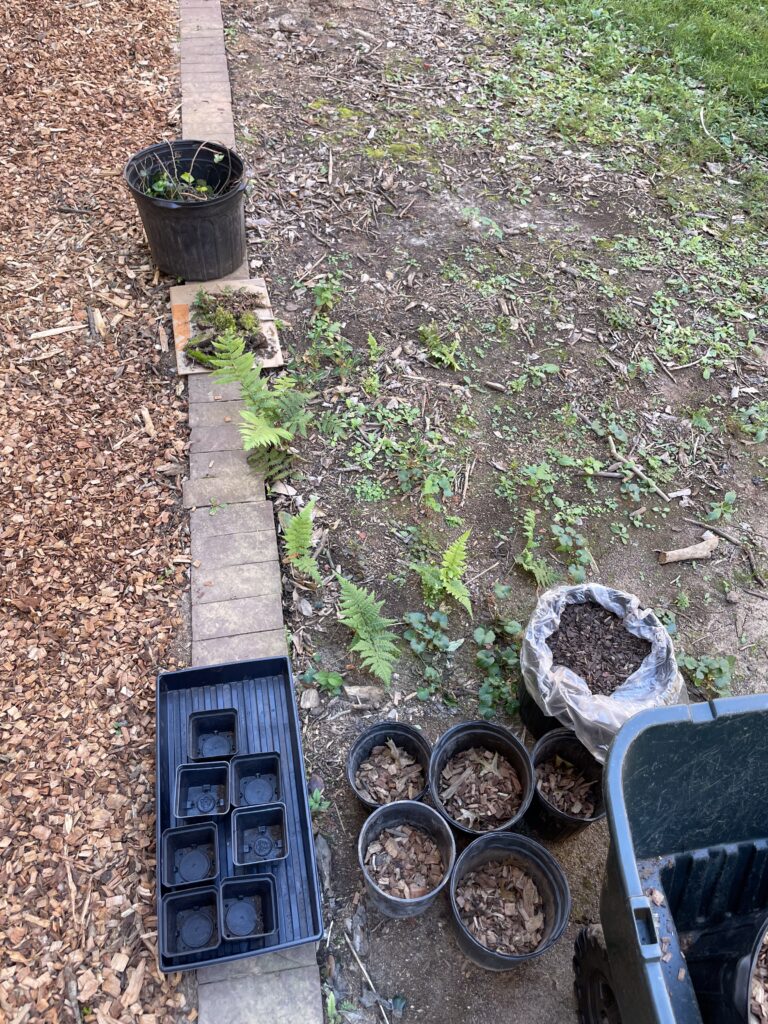
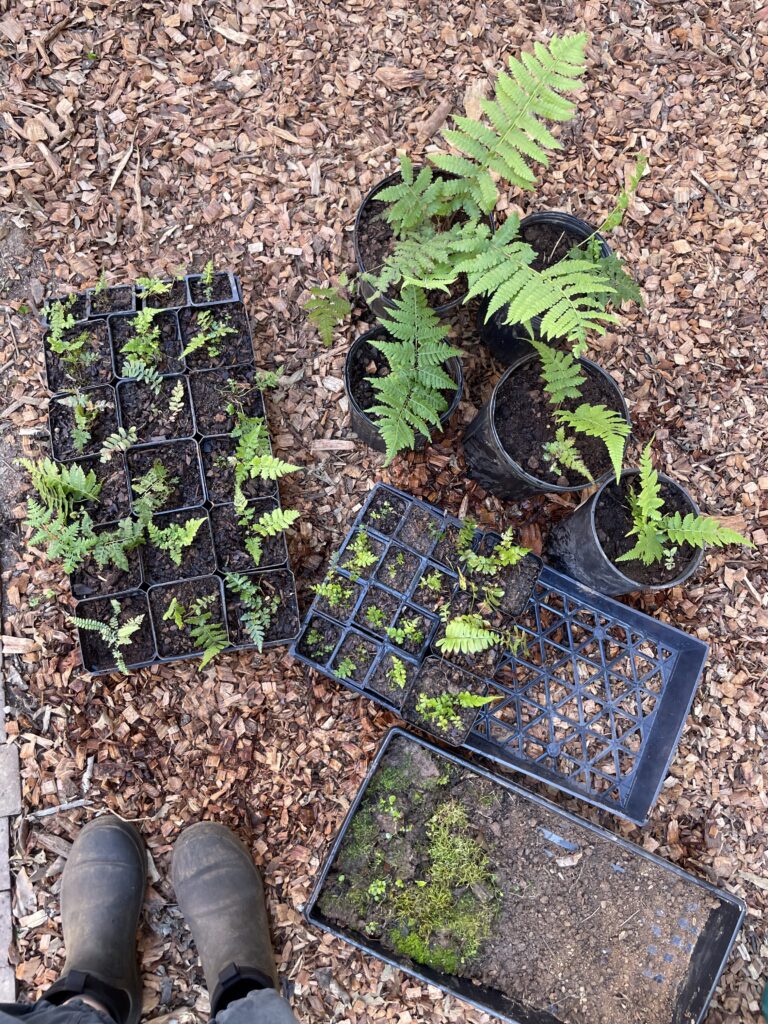
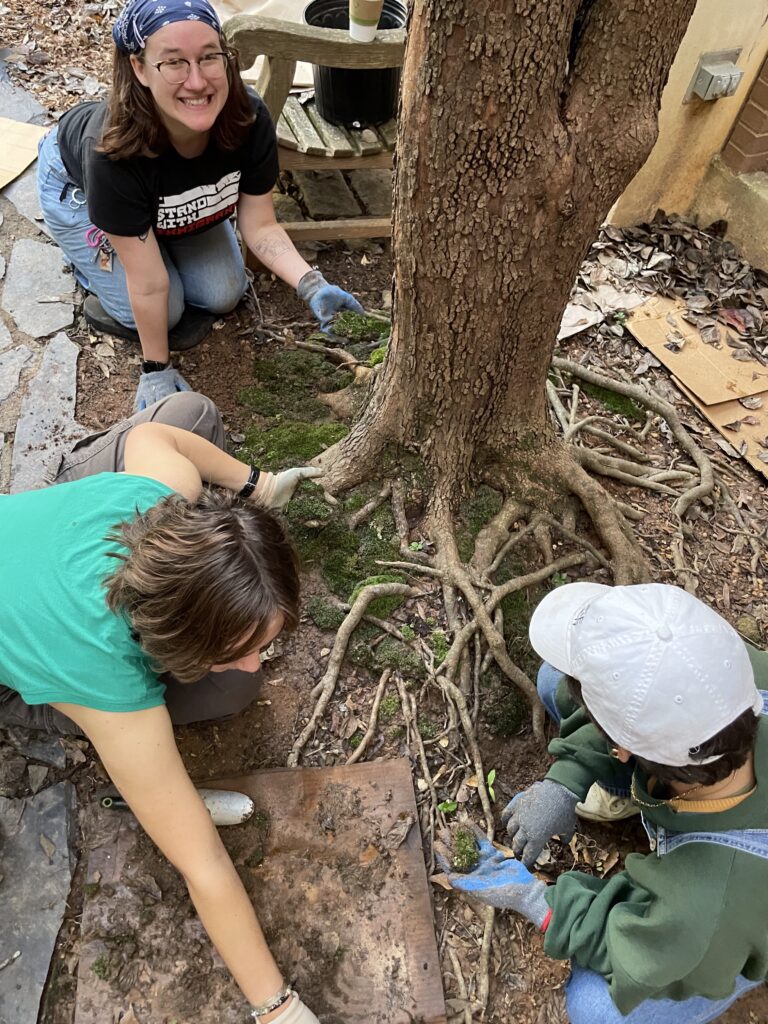

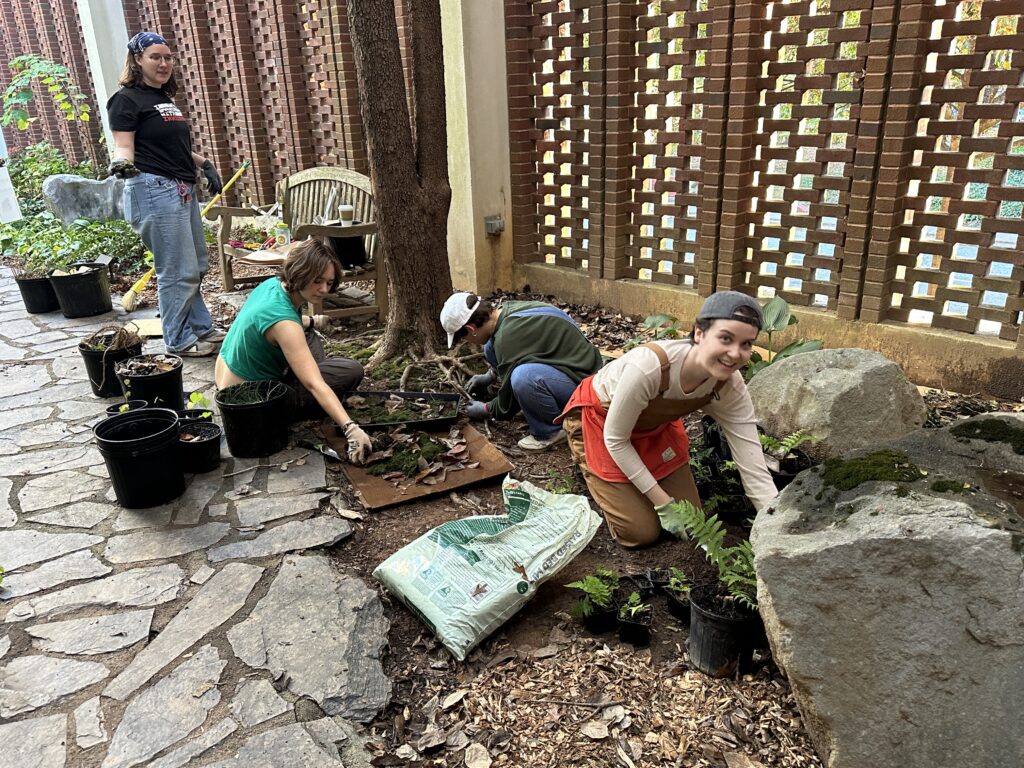
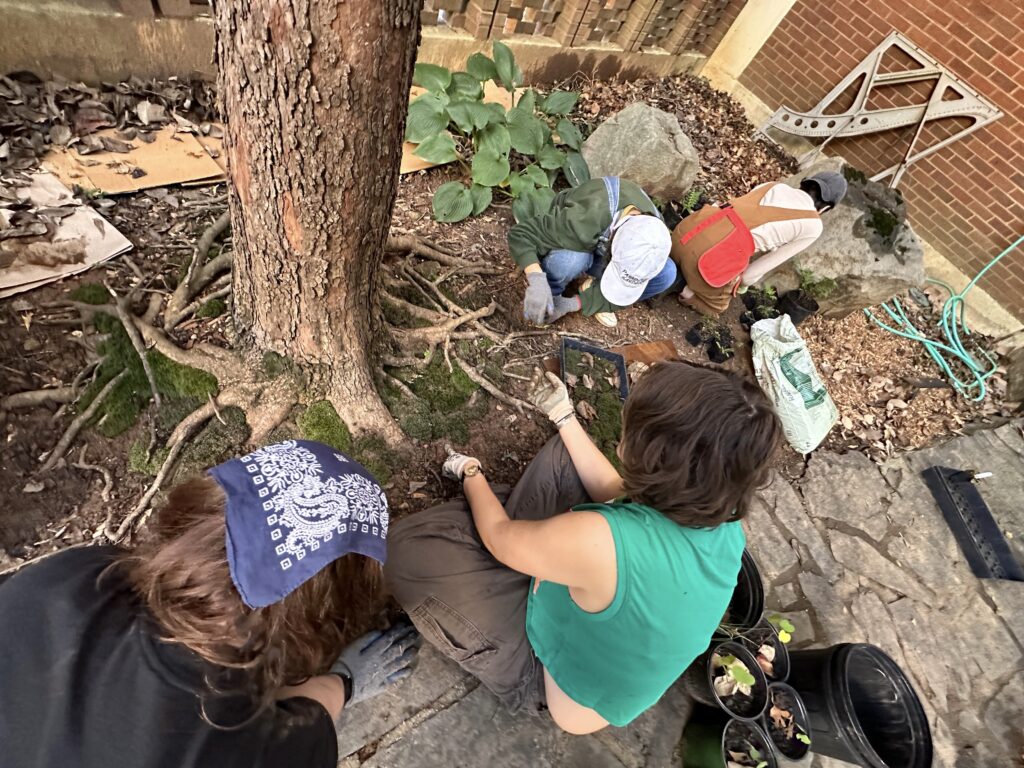
Eliza recently attended a fascinating webinar about mosses and their roles within the ecosystem. Mosses provide carbon sequestration, nitrogen fixation, soil generation, and enrichment. They protect soils by regulating temperature, moisture, and erosion, and by sheltering mycorrhizal fungi networks and soil microbes. They perform a crucial role in ecosystem resilience and recovery after damage by preparing soils for the growth of vascular plants, and thus are important contributors to ecological restoration!
While moving mulch, we found some cobalt crust fungi, also known as velvet blue spread, Terana caerulea—an exciting find! This is a saprobic fungus, which means it decomposes wood. Saprobic fungi play a critical role in the world because they cycle essential nutrients back into the ecosystem.
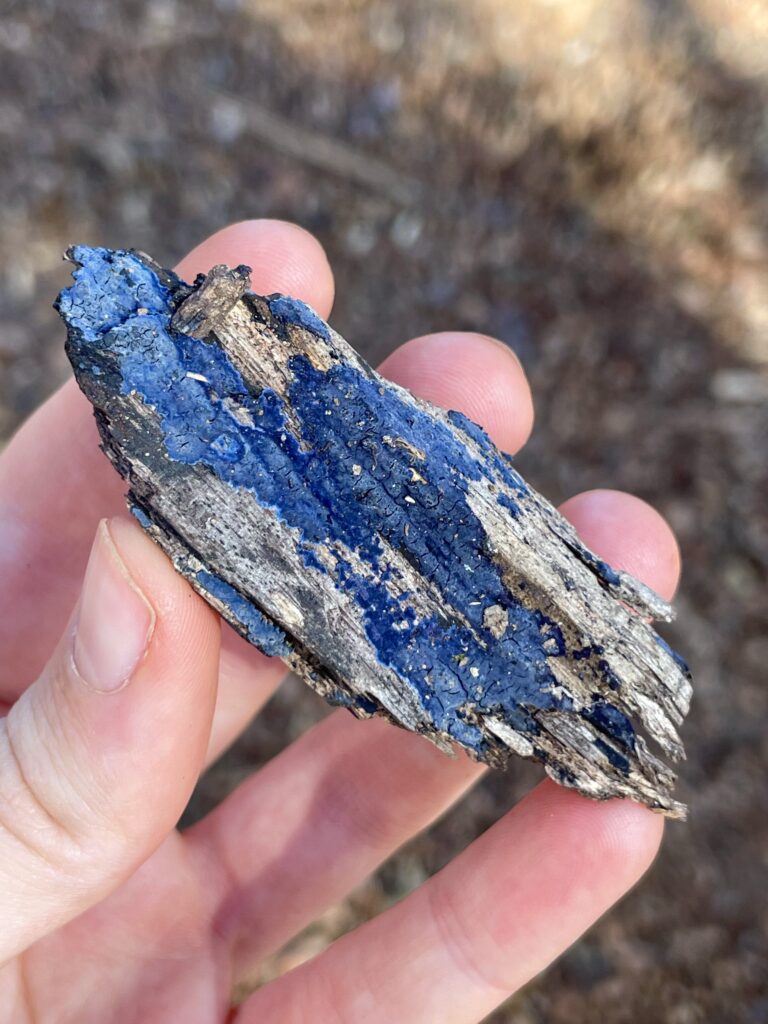
Last week, Eliza attended the Georgia Native Plant Society meeting that was held on our campus, which included a wonderful presentation on the relationship between native plants and climate change. They were giving away free native plants for participants, so we got a white beardtongue, Penstemon digitalis, to plant in the Secret Garden as part of our work day. Growing up to 5 feet tall, this semi-evergreen perennial supports hummingbirds and bees with its tubular white flowers. We’re excited to watch its growth! (Photo below from Wikimedia Commons.)
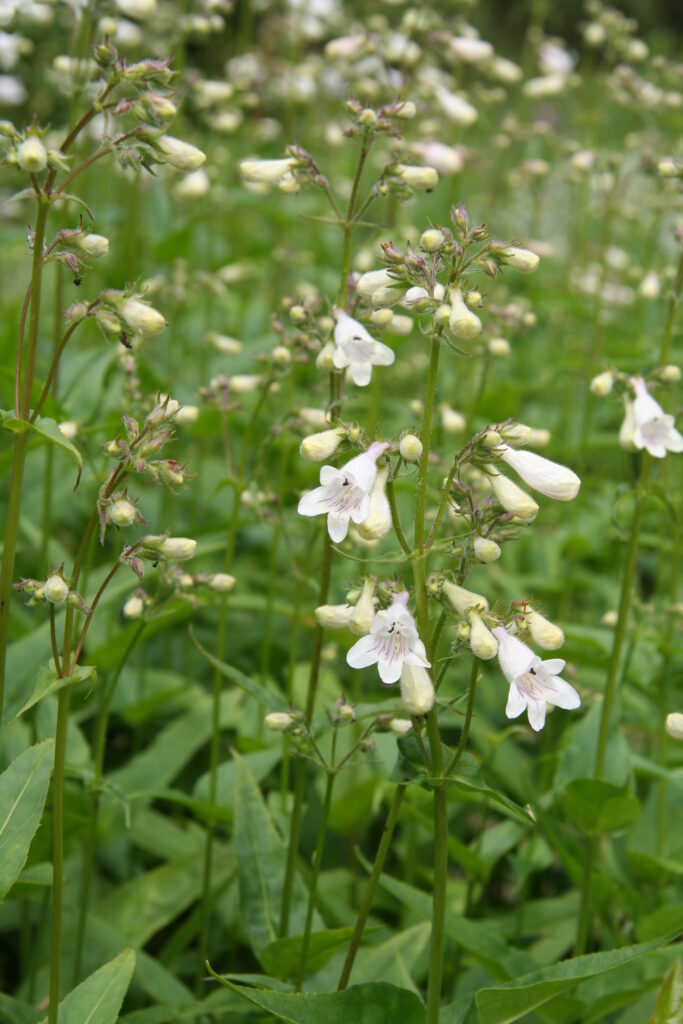
Thank you for following along on our progress in the gardens! We are so grateful for the enthusiasm and support that we’ve received. We want to recognize the contributions of our hardworking volunteers, student workers, and all others who are making this project possible. If you are interested in getting involved, please reach out!


